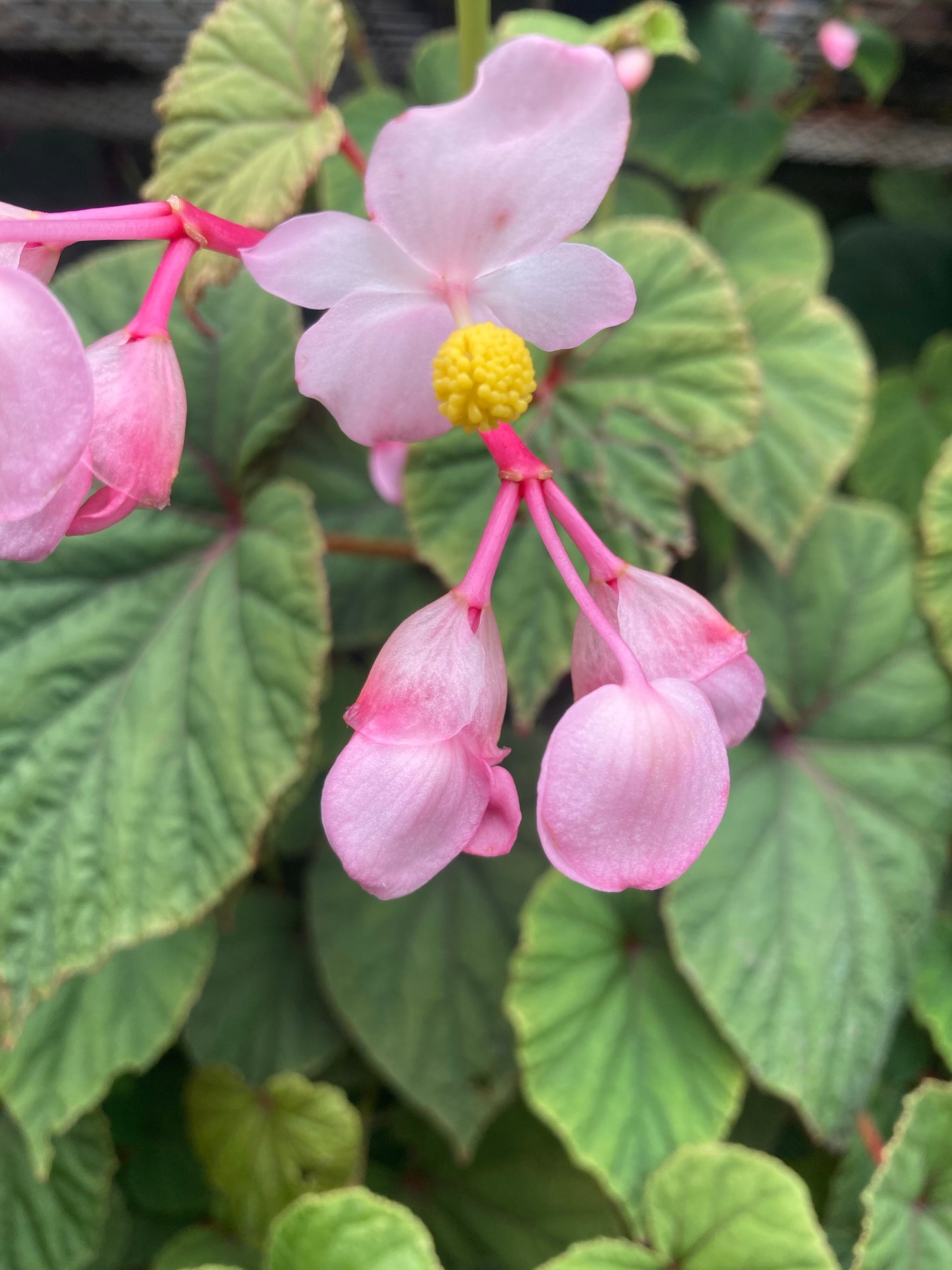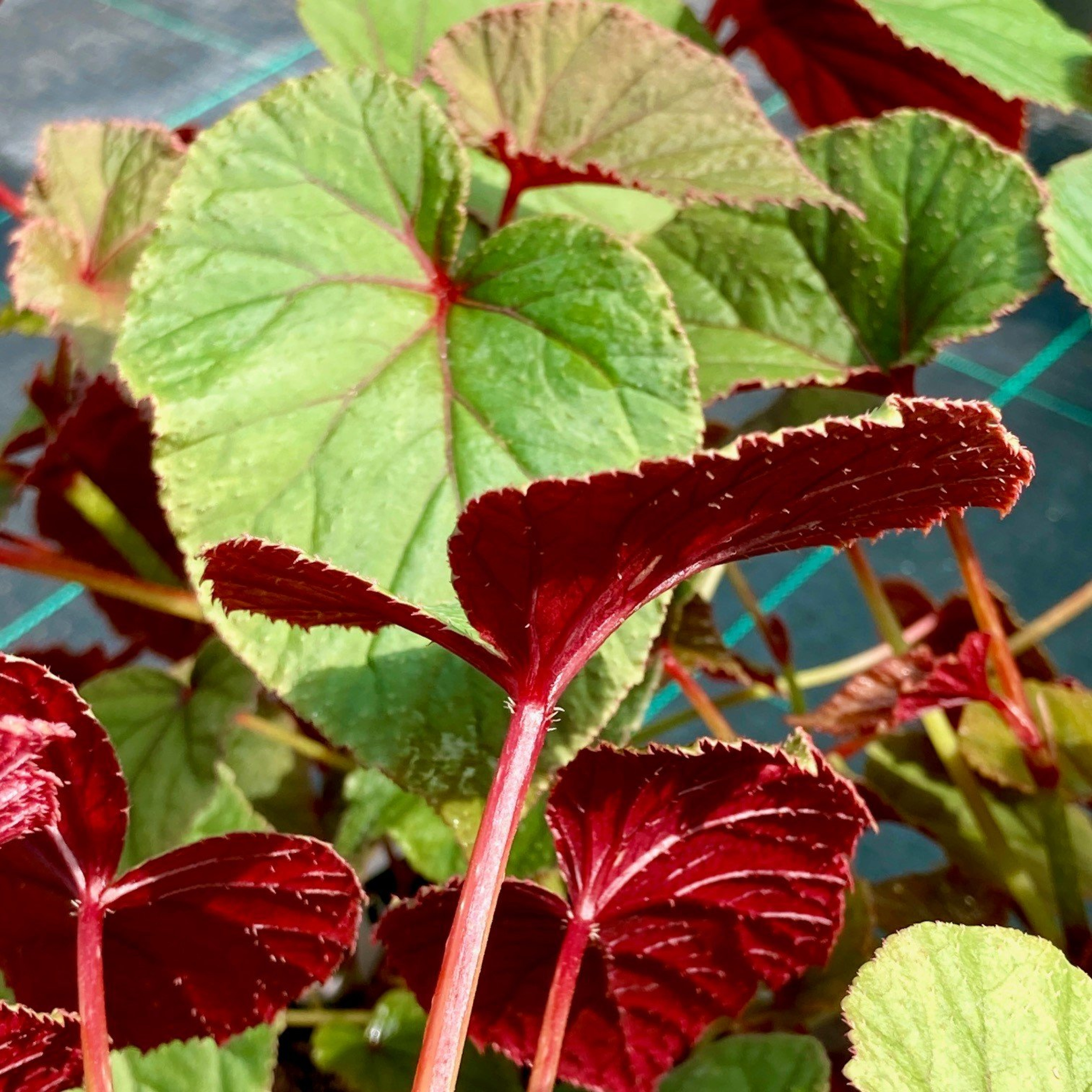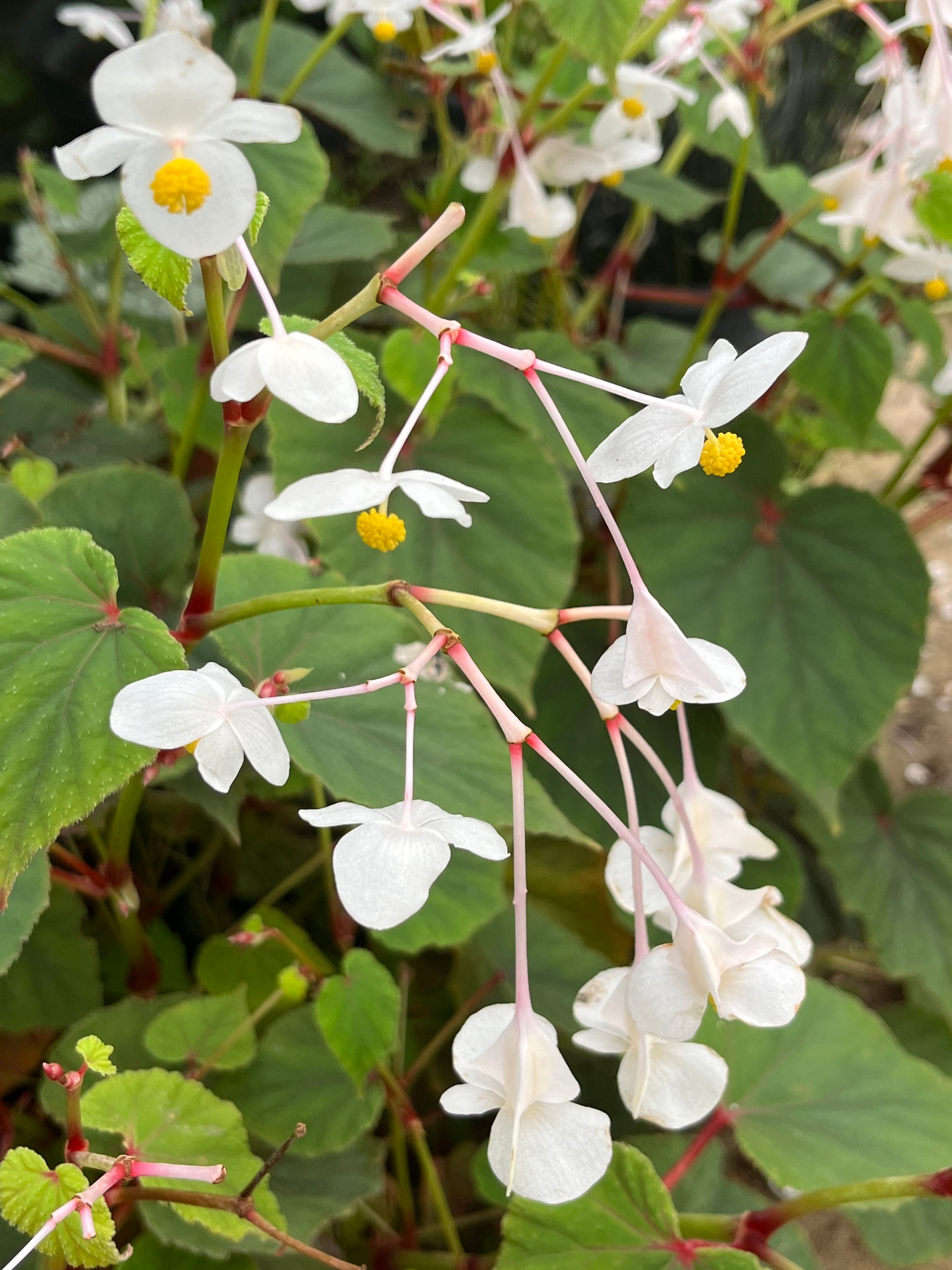The Enchanting Begonia Grandis: A Hardy Beauty for Shaded Gardens
Begonia grandis, often referred to as the Hardy Begonia, stands as a testament to the genus’s remarkable diversity. Unlike its tender, tropical cousins, this species possesses a resilience that allows it to thrive in temperate climates, bringing a touch of exotic elegance to shaded gardens. This extensive exploration delves into the various facets of Begonia grandis, from its botanical origins and characteristics to its cultivation and ecological significance.
Begonia grandis is native to China, Japan, and the eastern Himalayas, where it inhabits moist, shaded woodlands. Its adaptability to cooler temperatures sets it apart from the majority of Begonia species, which are typically found in tropical and subtropical regions. The species belongs to the section Diploclinium within the Begonia genus, a group characterized by its unique flower structure and deciduous nature.

Deciduous Nature
One of the most notable features of Begonia grandis is its deciduous nature. Unlike many begonias that retain their foliage year-round, this species sheds its leaves in autumn, entering a period of dormancy. This adaptation allows it to survive freezing temperatures, a crucial trait for its success in temperate climates.
Foliage
The leaves of Begonia grandis are heart-shaped or ovate, with a slightly asymmetrical base. They are typically dark green on the upper surface and reddish or purplish beneath, adding a subtle yet striking contrast. The leaves are often covered with fine hairs, giving them a velvety texture.
Flowers
The flowers of Begonia grandis are delicate and charming, appearing in late summer and continuing into autumn. They are borne in loose, branching cymes, with male and female flowers present on the same plant. The flowers are typically pink or white, with four tepals (petal-like sepals). The male flowers are larger and more showy, while the female flowers are smaller and possess a winged ovary.
Bulbils

Perhaps the most fascinating characteristic of Begonia grandis is its production of bulbils. These small, aerial tubers develop in the leaf axils and drop to the ground in autumn, giving rise to new plants. This efficient method of vegetative propagation contributes to the species’ ability to naturalize in suitable environments.
Ideal Growing Conditions
Begonia grandis thrives in shaded or semi-shaded locations with moist, well-drained soil. It prefers a slightly acidic to neutral pH. While it can tolerate some sun, it is essential to avoid direct, intense sunlight, especially during the hottest parts of the day.
Planting and Propagation
The best time to plant Begonia grandis is in spring or autumn. Plant the tubers or bulbils at a depth of about 2-3 inches, spacing them about 12-18 inches apart. Ensure the soil is well-prepared and enriched with organic matter.

Propagation is easily accomplished through the bulbils that drop in autumn. These can be collected and sown in pots or directly into the garden. Alternatively, tubers can be divided in spring.
Watering and Fertilizing
Begonia grandis prefers consistently moist soil, but it is essential to avoid waterlogging, which can lead to root rot. Water regularly during the growing season, especially during dry spells. Apply a balanced fertilizer in spring and again in mid-summer to promote healthy growth and flowering.
Overwintering
In colder regions, Begonia grandis will die back to the ground in winter. A layer of mulch can help protect the tubers from freezing temperatures. In very cold climates, it may be necessary to lift the tubers and store them in a cool, dry place until spring.
Pest and Disease Management
Begonia grandis is generally resistant to pests and diseases. However, slugs and snails can sometimes be a problem, especially in damp conditions. Root rot can occur if the soil is poorly drained. Good air circulation and proper watering practices can help prevent fungal diseases.
Naturalization
Begonia grandis has the potential to naturalize in suitable environments, particularly in shaded, moist woodlands. Its bulbils provide an efficient means of dispersal, allowing it to spread and establish new colonies.
Pollinator Attraction
The flowers of Begonia grandis attract a variety of pollinators, including bees and flies. This contributes to the biodiversity of the garden and supports the ecosystem.
Soil Health
The deciduous leaves of Begonia grandis contribute to soil health by adding organic matter as they decompose. This improves soil structure, water retention, and nutrient availability.
Shade Gardens
Begonia grandis is an excellent choice for shade gardens, where its elegant foliage and delicate flowers can brighten up dark corners. It pairs well with other shade-loving plants, such as hostas, ferns, and astilbes.
Woodland Gardens
Its natural habitat makes it a perfect addition to woodland gardens, where it can blend seamlessly with the surrounding environment. Its naturalizing habits make it a great choice for a natural look.
Containers
While it prefers to be in the ground, Begonia grandis can also be grown in containers, provided they are placed in a shaded location and the soil is kept consistently moist.
Edging and Groundcover
Its spreading habit makes it suitable for use as an edging plant or groundcover in shaded areas.
Begonia grandis ‘Alba’
This cultivar features pure white flowers, adding a touch of elegance to the garden.
Begonia grandis ‘Heronswood Hybrid’
A hybrid of Begonia grandis, this cultivar boasts larger, more vibrant pink flowers.
Begonia grandis ‘Pink Form’
A common variant with pink flowers, that is the standard for the species.
Begonia grandis has been cultivated in gardens for centuries, prized for its beauty and resilience. Its introduction to Western horticulture in the 19th century sparked interest among plant enthusiasts and breeders.
In traditional Chinese medicine, certain Begonia species have been used for their medicinal properties. While Begonia grandis is not widely used in this context, its presence in its native regions suggests a potential connection to traditional practices.
As climate change alters growing conditions, the adaptability of Begonia grandis may become increasingly valuable. Its ability to tolerate cooler temperatures and its efficient propagation methods make it a promising species for future gardens.
Continued breeding efforts may lead to the development of new cultivars with enhanced flower colors, sizes, and disease resistance.
Begonia grandis is a remarkable plant that offers a unique combination of beauty, resilience, and ecological value. Its ability to thrive in shaded gardens and its efficient propagation methods make it a valuable addition to any landscape. Whether you are a seasoned gardener or a novice, Begonia grandis is sure to enchant and delight with its delicate flowers and elegant foliage. Its ability to withstand colder climates also makes it a unique and valuable addition to many gardens that may not otherwise be able to host begonias. By understanding its needs and providing proper care, you can enjoy the beauty and charm of this hardy begonia for many years to come.

:max_bytes(150000):strip_icc()/gerber-daises-4121360-hero-bfd1a98e8bb44c45891b84d9df63b5ac.jpeg?resize=200,135&ssl=1)

